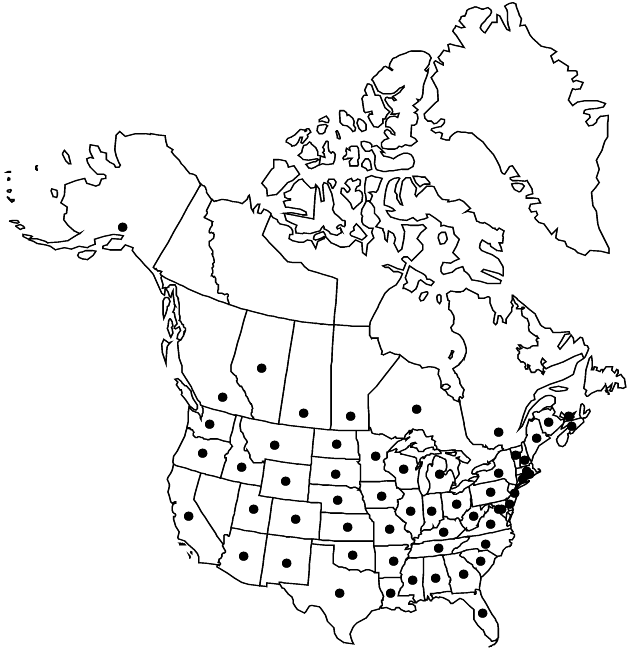Ambrosia trifida
Sp. Pl. 2: 987. 1753.
Annuals, 30–150 (–400+) cm. Stems erect. Leaves mostly opposite; petioles 10–30 (–70+) mm; blades rounded-deltate to ovate or elliptic, 40–150 (–250+) × 30–70 (–200+) mm, usually some blades palmately 3 (–5) -lobed, bases truncate to cuneate (sometimes decurrent onto petioles), margins usually toothed, rarely entire, abaxial and adaxial faces ± scabrellous and glanddotted. Pistillate heads clustered, proximal to staminates; florets 1. Staminate heads: peduncles 1–3+ mm; involucres ± saucer-shaped, 2–4 mm diam., scabrellous (often with 1–3 black nerves); florets 3–25+. Burs: bodies ± pyramidal, 3–5 (–7+) mm, glabrous or glabrate, spines 4–5, ± distal, ± acerose, 0.5–1 mm, tips straight (bases ± decurrent as ribs). 2n = 24, 48.
Phenology: Flowering Jul–Nov.
Habitat: Disturbed sites, waste places, damp soils
Elevation: 0–1600 m
Distribution

Alta., B.C., Man., N.B., N.S., Ont., P.E.I., Que., Sask., Ala., Alaska, Ariz., Ark., Calif., Colo., Conn., Del., D.C., Fla., Ga., Idaho, Ill., Ind., Iowa, Kans., Ky., La., Maine, Md., Mass., Mich., Minn., Miss., Mo., Mont., Nebr., N.H., N.J., N.Mex., N.Y., N.C., N.Dak., Ohio, Okla., Oreg., Pa., R.I., S.C., S.Dak., Tenn., Tex., Utah, Vt., Va., Wash., W.Va., Wis., Wyo., Mexico (Chihuahua)
Discussion
The name Ambrosia ×helenae Rouleau applies to hybrids between A. artemisiifolia and A. trifida. Hybrids between A. bidentata and A. trifida have been recorded. Ambrosia trifida may be no longer extant in British Columbia.
Selected References
None.
Lower Taxa
"glabrate" is not a number. "glabrous" is not a number.
